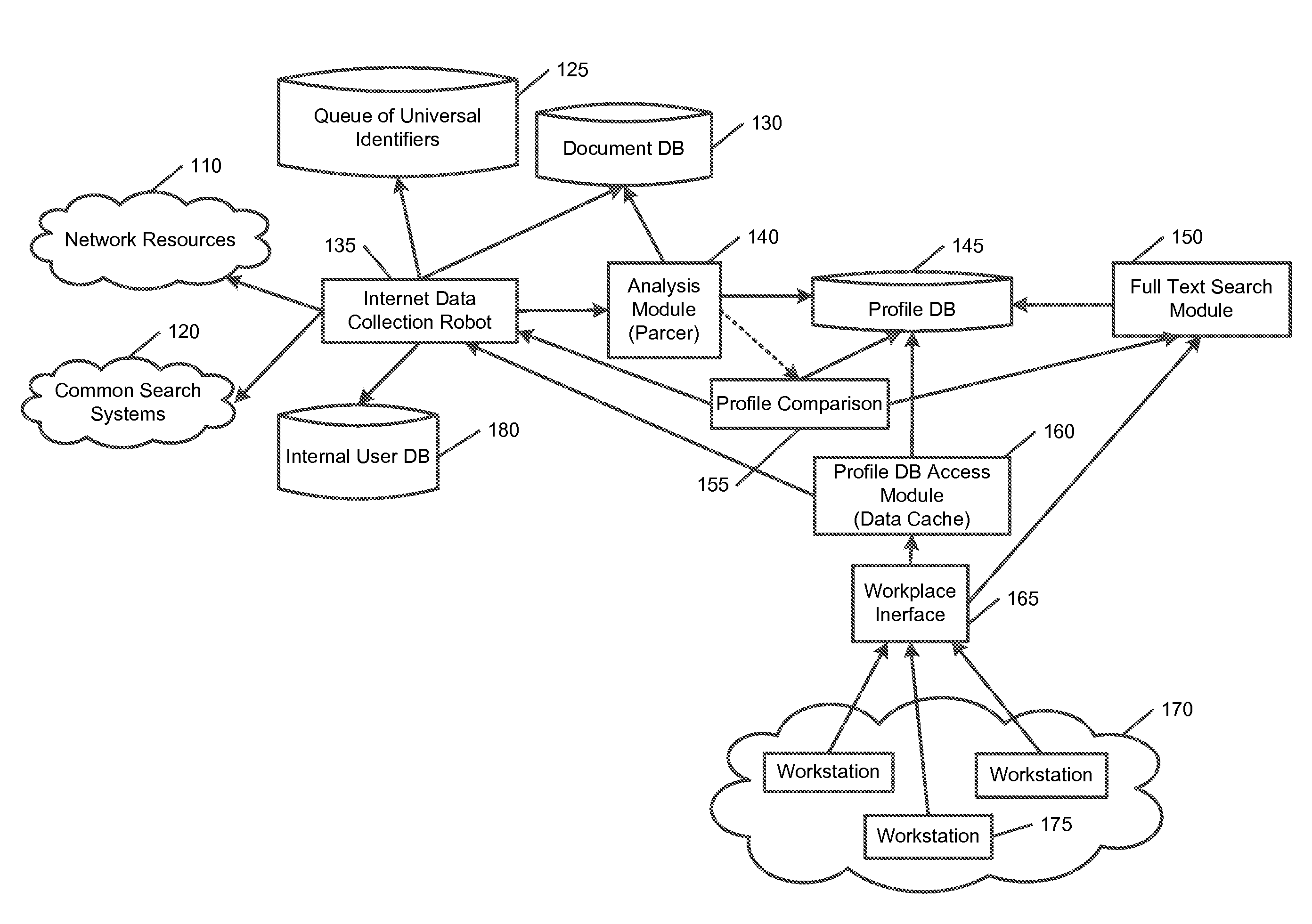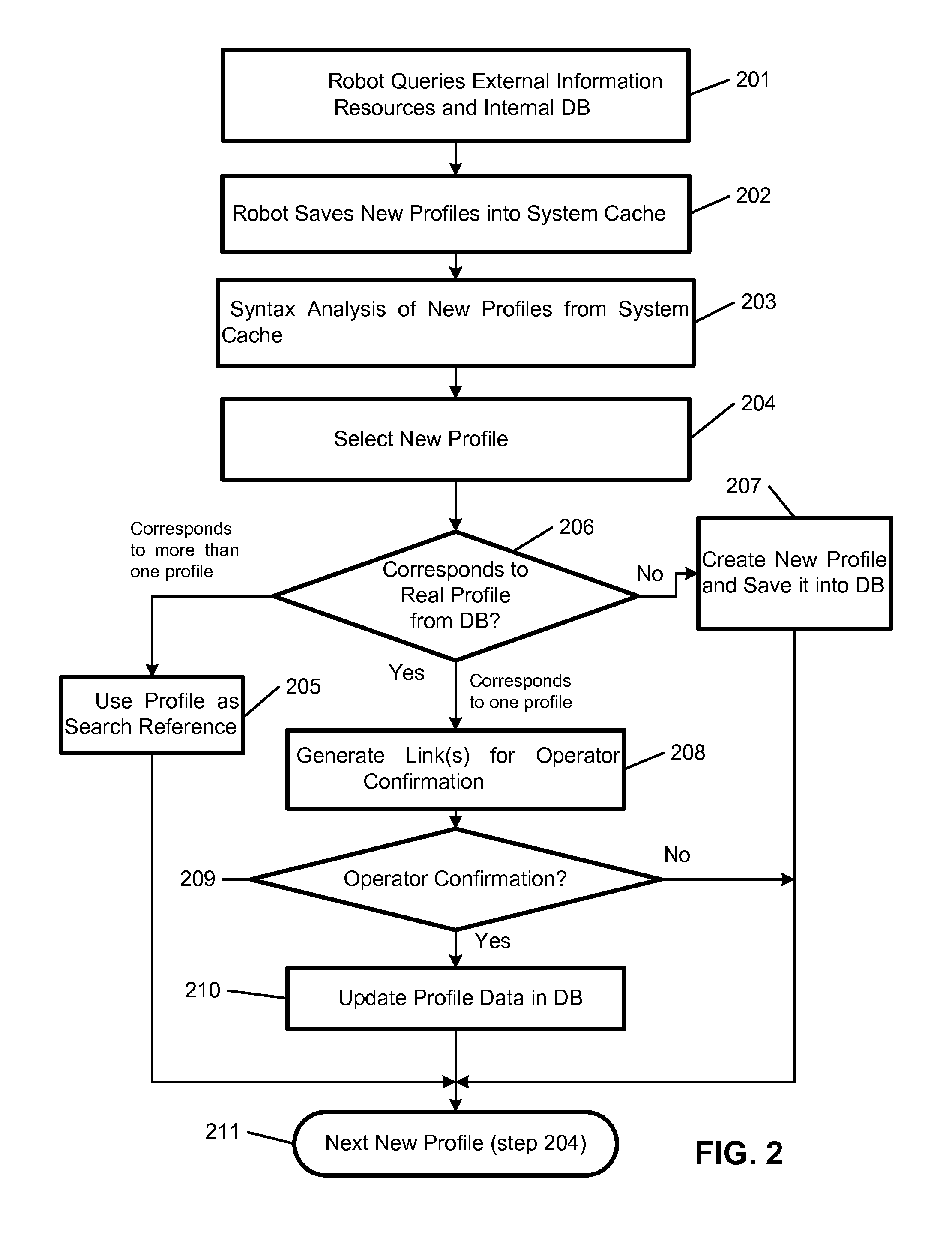Personnel recrutment system using fuzzy criteria
a technology of fuzzy criteria and data search system, applied in the field of data search system designed for personnel recruitment using fuzzy criteria, can solve the problems of insufficient, difficult to find a suitable candidate, and only using conventional methods to look
- Summary
- Abstract
- Description
- Claims
- Application Information
AI Technical Summary
Benefits of technology
Problems solved by technology
Method used
Image
Examples
Embodiment Construction
[0040]The present invention relates to data search systems designed for personnel recruitment using fuzzy criteria. Fuzzy criteria here might be skills that are not easy to define strictly—e.g., “Product Management Skills,” or “Strong Software Development Background,” etc.
[0041]Many candidates have their profiles / accounts on various professional social networks, their own websites; they also join professional discussions on Internet forums and, in case with programmers, participate in open-source projects. According to an exemplary embodiment, since there are no direct links between different profiles of the candidate, the system makes some distributed profiles “fuzzy” (i.e., unverified). These “fuzzy” profiles are also displayed during the search, and the user of the system can choose the needed profile from a database.
[0042]The present invention, unlike a conventional approach, provides for an automated search for both “active” and “passive” job candidates, generates “distributed ...
PUM
 Login to View More
Login to View More Abstract
Description
Claims
Application Information
 Login to View More
Login to View More - R&D
- Intellectual Property
- Life Sciences
- Materials
- Tech Scout
- Unparalleled Data Quality
- Higher Quality Content
- 60% Fewer Hallucinations
Browse by: Latest US Patents, China's latest patents, Technical Efficacy Thesaurus, Application Domain, Technology Topic, Popular Technical Reports.
© 2025 PatSnap. All rights reserved.Legal|Privacy policy|Modern Slavery Act Transparency Statement|Sitemap|About US| Contact US: help@patsnap.com



